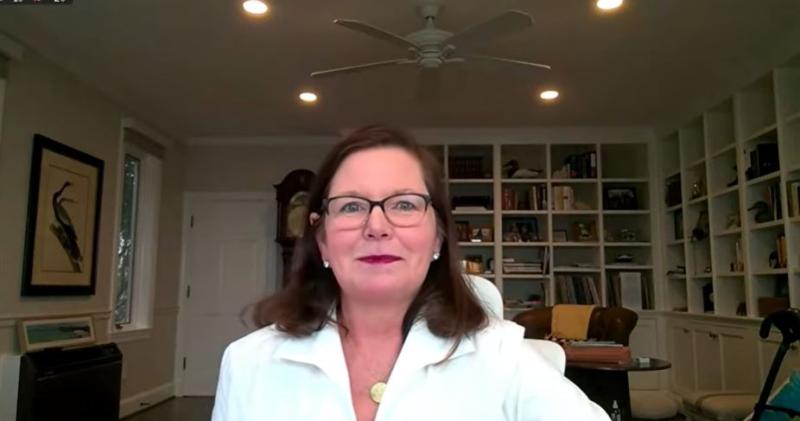
No doubt about it, last week’s hearing on C-band and aviation was tilted toward the aviation community. Seven invitees represented aviation and two witnesses were from the wireless industry. Federal Aviation Administration (FAA) Administrator Steve Dickson was there, but no one from the FCC, the expert agency on spectrum, was present.
Chair of the House Committee on Transportation and Infrastructure Peter DeFazio, (D-Oregon), kicked off the hearing and everyone knew where he was coming from long before he called U.S. wireless services the “crappiest in the world.” More than once, he talked about how airline safety takes precedence over everything else and the “worst, worst” case is what aviators plan for. No arguments there.
The hearing lasted more than four hours and included questions from lawmakers across the country, many via video due to Covid restrictions. On more than one occasion, lawmakers groused that it was too bad the FCC declined to appear at the hearing. That was news to some of us in the audience. FCC Commissioner Brendan Carr last week said he was willing to represent the agency if someone would just extend an invitation.
RELATED: Lawmakers set to hear from aviation on C-band
On Thursday, it was disclosed that FCC Chairwoman Jessica Rosenworcel was invited to the hearing hosted by DeFazio and Aviation Subcommittee Chair Rick Larsen (D-Washington) but declined.
“The Chairwoman was invited but had a conflict on this date,” an FCC spokesperson told Fierce in a statement. “However, she did meet with Congressmen DeFazio and Larsen and had a productive discussion with both of them yesterday, including on how to build on the progress to date so that 5G networks and aviation technologies can safely coexist in the United States.”
It’s not clear why Carr couldn’t have appeared at the hearing; he was on Capitol Hill the day of the event. Who knows? It seems as though the role of politics sums up a lot of what’s going on here, whether it’s between federal agencies or a broader thing between presidential administrations. Judging by some of the pot shots taken during the hearing, politics is driving more of this than it should be.
RELATED: Senators introduce C-band legislation to prevent windfall for satellite companies
Even with articles like this chronicling what happened between industry and government agencies, one of the questions that continues to crop up is how we all got to a situation where the FCC decided to auction spectrum that the FAA believes is too close to radar altimeters – and how the airlines threatened a complete economic meltdown and commercial airline chaos if their concerns weren’t addressed.
Communications breakdown
At the hearing, FAA and other aviation officials reinforced the theme that a breakdown in communications occurred between the FAA and the FCC — and the National Telecommunications & Information Administration (NTIA) was MIA. At least, this is one condensed version.
One aviation official noted the irony that they were dealing with communications companies, and they weren’t getting the kind of details they needed about where communications equipment was located.
“I do find it somewhat ironic,” said Captain Joe DePete, president of the Air Line Pilots Association. “This is not to be funny,” but in the “Cool Hand Luke” movie, there’s a line about “the failure to communicate.” In this case, “these are communications companies that we’ve been asking a long time to collaborate with that have rejected those offers,” he said.
Side note: Wireless companies are notoriously protective of exactly where their cell sites/towers are located and don’t give this up easily, apparently not even to the government. Also: Telecom engineers and aerospace engineers are really smart but they speak different languages. But as Larsen noted, it’s a good sign that they’re starting to talk to each other.
Nothing quite like this
Asked if other administrations have used a “de-confliction” process that could have resulted in a better outcome, CTIA President and CTIA Meredith Atwell Baker referenced some degree of cooperativeness that has emerged.
“This was Auction 107 and I’ve never seen anything like this before,” she said. “I would say this was an anomaly and hopefully we’ve got all the processes in place now to make sure that we are working with the aviation industry as cooperatively as possible.” But yes, the FCC takes comments and it has spectrum experts that handle these kinds of issues all the time.

Baker at one point also noted that the FCC came out with its C-band auction rules in March 2020 and the wireless carriers followed the rules.
“How this didn’t get resolved before … certainly, before the auction in December of 2020, I don’t understand,” she said, noting her previous experience at NTIA and the Interdepartment Radio Advisory Committee (IRAC) process that should have driven a resolution.
“I’ve seen that process work on really hairy spectrum issues, from broadcasters to DoD to FBI surveillance. I wasn’t there so I can’t speak to why it didn’t work here but we need to get the agency input early and let the spectrum engineers do their job because this is a technical engineer issue and we have the best engineers, certainly the best spectrum engineers, in the world,” she said. “I think now that we have a permanent head of NTIA in Alan Davidson and Jessica Rosenworcel as chairwoman of the FCC, they have an opportunity now to take a fresh look at what is working and what is not and we certainly hope that they will.”
‘Edge case’ that doesn’t involve 5G edge
In his testimony, Dennis Roberson, president and CEO of Roberson & Associates and a former chair of the FCC's Technological Advisory Council, described an “edge case” problem, which is one that only occurs in unusual circumstances and for a very limited number of aircraft. (And yes, this would coincide with DeFazio’s desire to plan for the “worst, worst” case scenario, which is required for safe airline travel.)
Fundamentally, the problem is a design issue with the aviation industry’s radar altimeters, which sense how high the aircraft is above the ground and especially relied upon in bad weather when ground visibility is limited and runway conditions are suboptimal. It’s a crucial component of an aircraft’s ability to safely land, Roberson said.
The altimeters are supposed to operate in their assigned spectrum band between 4.2 and 4.4 GHz, but when the devices were originally designed, they had very low power neighbors, such as the satellites beaming information to earth from distant orbits. The designers of the altimeters figured it was OK to make instruments that “looked” outside their band, and there was no legal prohibition on that, he explained. But decades later, new neighbors started moving in – Verizon and AT&T – and now that space becomes a problem.
Modern altimeters don’t have this problem of looking outside their assigned band, but for the older models, it’s a problem, he said. That’s where the FAA is determining which aircraft have the proper altimeters for 5G co-existence and which ones don’t.
RELATED: C-band costs rise as AT&T, Verizon unscramble cluster with aviation: Editor’s Corner
Roberson brought up something else that gets raised now and again but apparently not nearly enough: The FCC regulates transmitters but it doesn’t regulate receivers. The discussion about regulating receivers has been going on for decades and surely is one that will be getting more attention going forward.
Who’s paying for new altimeters?
One of the perplexing issues is who pays for new altimeters and why that isn't getting more attention. That issue has been reported, but it’s not front and center as much as expected. Surely, the government could provide the funds, and the aviation industry isn’t so proud as to decline them (or demand them, however you want to interpret that.)
Baker was asked during the hearing if wireless companies would be willing to cover some of the costs for airlines to upgrade the planes’ altimeters that are at risk of interference with 5G so the restrictions around airports can be lifted sooner.
She suggested that like the FCC, operators don’t think there’s a threat of interference; therefore, why should they pay?
“I actually think it’s premature to go there because this hearing seems to presuppose that there’s interference where we don’t believe that there is,” she said. “So I think we need to let the engineers do their job and as far as who pays, yes, there’s been all sorts of instances where through a spectrum relocation fund or through a designation from Congress” funds were set aside for such purpose. “Congress can use the proceeds of an $80 billion auction as they wish. That part’s really up to the government, but I don’t accept the premise” that there’s actually interference at this point.
Even with all the questions that were asked and answered, a lot of questions remain, such as what exactly happens after the temporary measures expire in July and how the next batch of C-band spectrum will be a better process in 2023. Surely everyone is motivated to prevent another “failure to communicate” before any of that happens. – Monica @malleven33

